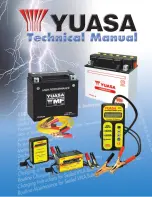
the system is not operating properly. The
TPMS malfunction indicator is combined with
the low tire pressure indicator lamp. When
the system detects a malfunction, the indica‐
tor lamp will flash for approximately a minute
and then remain continuously illuminated.
This sequence will continue upon subsequent
vehicle start-ups as long as the malfunction
exists.
When the malfunction indicator is illumina‐
ted, the system may not be able to detect or
signal low tire pressure as intended. TPMS
malfunctions may occur for a variety of rea‐
sons, including the installation of incompati‐
ble replacement or alternate tires or wheels
on the vehicle that prevent the TPMS from
functioning properly.
Always check the TPMS malfunction warning
lamp after replacing one or more tires or
wheels on your vehicle to ensure that the
replacement or alternate tires and wheels
allow the TPMS to continue to function prop‐
erly.
Using a tire pressure sensor, the system checks
the tire pressure of the tires installed on the
vehicle.
New tire pressure sensors, e.g. in winter tires,
are automatically taught-in the first time the
vehicle is driven.
The tire pressure appears in the multifunction
display (
→
page 197).
If there is a substantial pressure loss or if the
tire temperature is excessive, a warning will be
given:
R
Via display messages (
→
page 382).
R
Via the
h
warning lamp in the instrument
cluster (
→
page 410).
It is the driver's responsibility to set the tire
pressure to the recommended cold tire pressure
suitable for the operating situation. Set the tire
pressure for cold tires using a tire pressure
gauge. Note that the correct tire pressure for the
current operating situation must first be taught-
in to the tire pressure monitoring system.
In most cases, the tire pressure monitoring sys‐
tem will automatically update the new reference
values after you have changed the tire pressure.
You can, however, also update the reference val‐
ues by restarting the tire pressure monitoring
system manually (
→
page 318).
System borders
The tire pressure monitoring system does not
issue a warning:
R
If the tire pressure is set incorrectly.
R
If there is a sudden pressure loss caused, for
example, by a foreign object penetrating the
tire.
R
If there is a malfunction caused by another
radio signal source.
Be sure to also observe the following further
related subjects:
R
Notes on tire pressure (
→
page 312)
Checking the tire pressure with the tire pres‐
sure monitoring system
Requirements
R
The ignition is switched on.
Wheels and tires 317
Summary of Contents for E-class
Page 7: ...5 ...
Page 8: ...6 At a glance Cockpit ...
Page 10: ...Instrument display standard 8 At a glance Cockpit ...
Page 12: ...Instrument display in the Widescreen Cockpit 10 At a glance Warning and indicator lamps ...
Page 14: ...12 At a glance Overhead control panel ...
Page 16: ...14 At a glance Door control panel and seat adjustment ...
Page 18: ...16 At a glance Emergencies and breakdowns ...
Page 444: ...442 ...
Page 445: ...443 ...
Page 446: ...444 ...
















































